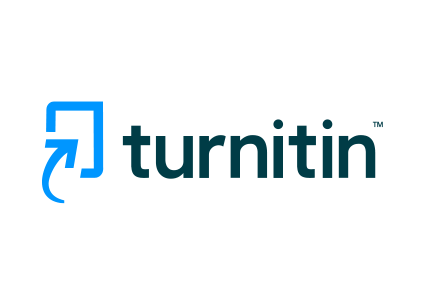REFLECTIONS ON REALITY: A REPRESENTATION ANALYSIS OF ETHICAL DILEMMAS IN BLACK MIRROR’S “CROCODILE”
Hayomi Gendis Rinjani(1*)
(1) Universitas Gadjah Mada
(*) Corresponding Author
Abstract
This article explores the ethical complexities surrounding memory-extracting technologies by analyzing the speculative narrative of Black Mirror’s episode "Crocodile". Employing Stuart Hall’s representation theory as the main analytical framework and guided by Jawad’s research on brain-computer interface (BCI) ethics focusing on the ethical lenses of autonomy, privacy, and security, as well as responsibility and regulation, the study investigates how the Recaller device represents broader societal anxieties about surveillance, control, and the erosion of personal boundaries. Through content and discourse analysis, the research unpacks how “Crocodile” constructs meaning around the loss of individual agency and the moral consequences of technological overreach. The episode presents a dystopian world where memories are no longer private, forcing characters into ethically fraught situations. This study argues that the episode not only dramatizes the potential dangers of intrusive technologies but also reflects cultural fears about the future of privacy, autonomy, and moral responsibility. In doing so, it emphasizes the importance of critically assessing how emerging technologies might reshape societal values, ethics, and communication practices.
Keywords
Full Text:
PDFReferences
Anderson JR. Language, Memory, and Thought. London: Psychology Press; 2013.
Atske, S., & Atske, S. (2024, April 14). 4. Americans’ attitudes and experiences with privacy policies and laws. Pew Research Center. https://www.pewresearch.org/internet/2019/11/15/americans-attitudes-and-experiences-with-privacy-policies-and-laws/
Caccamo, E. (2022, June 3). Recaller (Realm Insurance). Encyclopédie De Médias Imaginaires. https://memoiretotale.org/recaller/
Entin, S. (2019, November 22). Black Mirror Crocodile – What does that title mean? ScreenSpy. https://www.screenspy.com/black-mirror-crocodile-what-does-that-title-mean/.
Fathmawati, Y. D., & Adi, I. R. (2023). American influence on youth culture: Representation analysis on punk subculture in Indonesia. Rubikon Journal of Transnational American Studies, 10(1), 12-31. https://doi.org/10.22146/rubikon.v10i1.74853
Fukuyama, F. (2002). Our posthuman future: Consequences of the biotechnology revolution. New York: Farrar, Straus and Giroux.
Hall, S. (1997). Representation: Cultural Representations and Signifying Practices. SAGE.
Hillcoat, L. (Director). (2017). Crocodile [TV Series]. Netflix.
Jawad, A. J. (2021). Bioethics of medical devices based on brain-computer interfaces (BCI). Journal, University of London.
Kelly, K., & Stone, A. R. (2010). Out of control: The new biology of machines, social systems, and the economic world. Cambridge: Basic Books.
Krishnakumar, D., Hamblin, M. R., & Lakshmanan, S. (2015). Meditation and Yoga can Modulate Brain Mechanisms that affect Behavior and Anxiety- A Modern Scientific Perspective. Ancient Science.
Lyons, A. (2019). Digital traces and memory: Rethinking identity in the age of surveillance. Journal of Digital Ethics, 12(4), 275-290.
Madan, C. R. (2024). Memories that matter: How we remember important things. Taylor & Francis.
Minimally invasive options for medically refractory epilepsy - Mayo Clinic. (2020, April 23). https://www.mayoclinic.org/medical-professionals/neurology-neurosurgery/news/minimally-invasive-options-for-medically-refractory-epilepsy/mac-20430455
Mujawar, S., Patil, J., Chaudhari, B., & Saldanha, D. (2021). Memory: Neurobiological mechanisms and assessment. Industrial Psychiatry Journal, 30(3), 311.
Petrillo, S. (2021, December 13). What makes TikTok so addictive?: an analysis of the mechanisms underlying the world’s latest social media craze. Brown Undergraduate Journal of Public Health. https://sites.brown.edu/publichealthjournal/2021/12/13/tiktok/
Sarah, R. N. E. (2024). The aftermath of 9/11: The shift of Islam representation in American TV series FBI. Rubikon Journal of Transnational American Studies, 11(1), 1-15. https://doi.org/10.22146/rubikon.v11i1.92967
Sculos, B. W. (2017). Screen savior: How Black Mirror reflects the present more than the future. Article, Florida International University, Florida.
Schulzke, M. (2014). The critical power of virtual dystopias. Games and Culture, 9, 315–334.
Smith, R. W., & Foley, M. (2018). The ethics of AI and memory: The role of technology in shaping identity. Ethics and Information Technology, 20(3), 215-229.
Sherwood L. Human Physiology: From Cells to Systems. Independence, KY: Cengage Learning; 2015. pp. 157–62.
Stickgold, R., & Walker, M. P. (2005). Memory consolidation and reconsolidation: what is the role of sleep? Trends in Neurosciences, 28(8), 408–415
Teixeira, B. R., & Santoro, F. M. (2017). Memory and privacy in The Entire History of You. Re-coding Black Mirror 2017 Workshop - 16th International Semantic Web Conference (ISWC 2017).
Temporal lobe seizure - Symptoms and causes - Mayo Clinic. (2023b, April 7). Mayo Clinic. https://www.mayoclinic.org/diseases-conditions/temporal-lobe-seizure/symptoms-causes/syc-20378214#
Thanh, T. K. C. (2018). Projecting visuals of paranoia: Visual representations of paranoia in Black Mirror’s “The Entire History of You”. (Master’s Thesis, University of Oslo, Oslo).
The Misadventures of Merlin Jones. (n.d.). Disney Movies. https://movies.disney.com/the-misadventures-of-merlin-jones
Van Rooij, L. G. M., Hellström-Westas, L., & De Vries, L. S. (2013). Treatment of neonatal seizures. Seminars in Fetal and Neonatal Medicine, 18(4), 209–215.
Wheeler, M. E., Petersen, S. E., & Buckner, R. L. (2000). Memory’s echo: Vivid remembering reactivates sensory-specific cortex. Proceedings of the National Academy of Sciences, 97(20), 11125–11129. https://doi.org/10.1073/pnas.97.20.11125
Wilson, D. A., & Linster, C. (2008). Neurobiology of a simple memory. Journal of Neurophysiology, 100(1), 2–7.
Article Metrics
Refbacks
- There are currently no refbacks.
Copyright (c) 2025 Rubikon : Journal of Transnational American Studies

This work is licensed under a Creative Commons Attribution-ShareAlike 4.0 International License.












